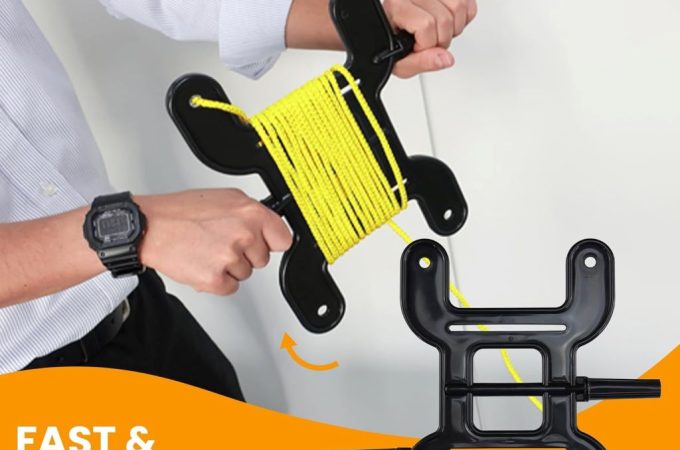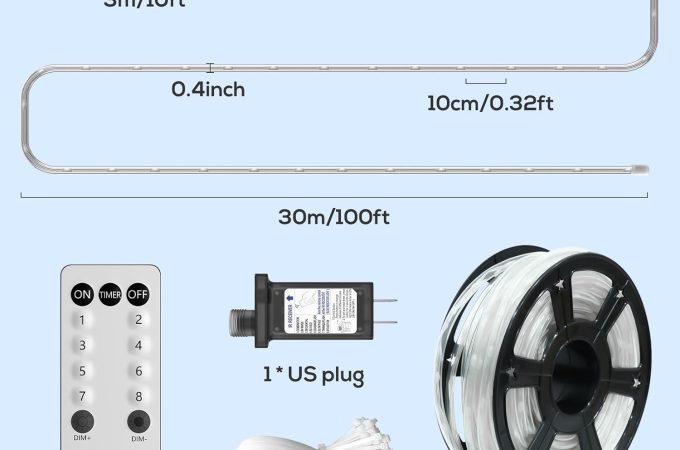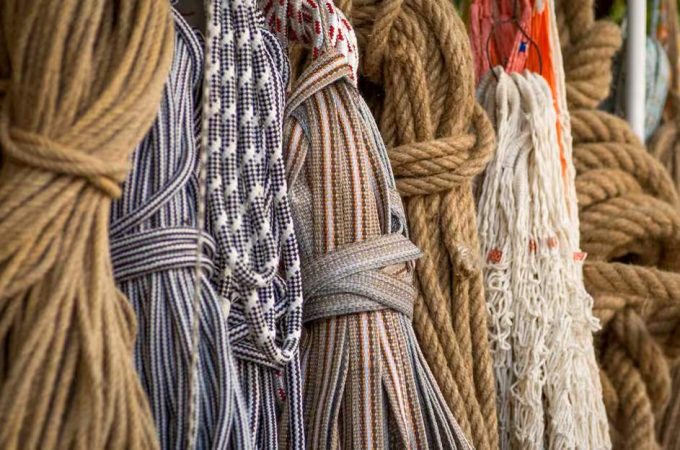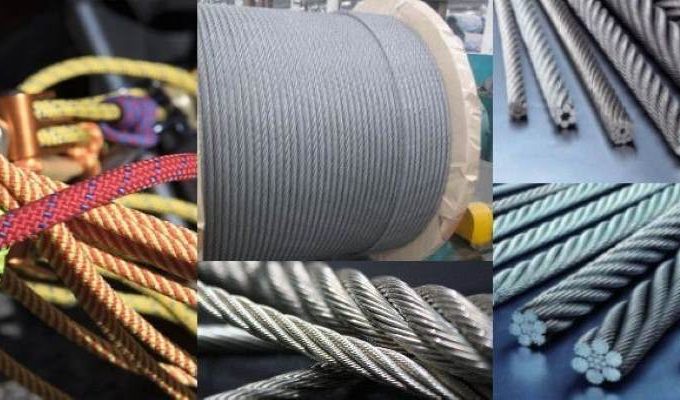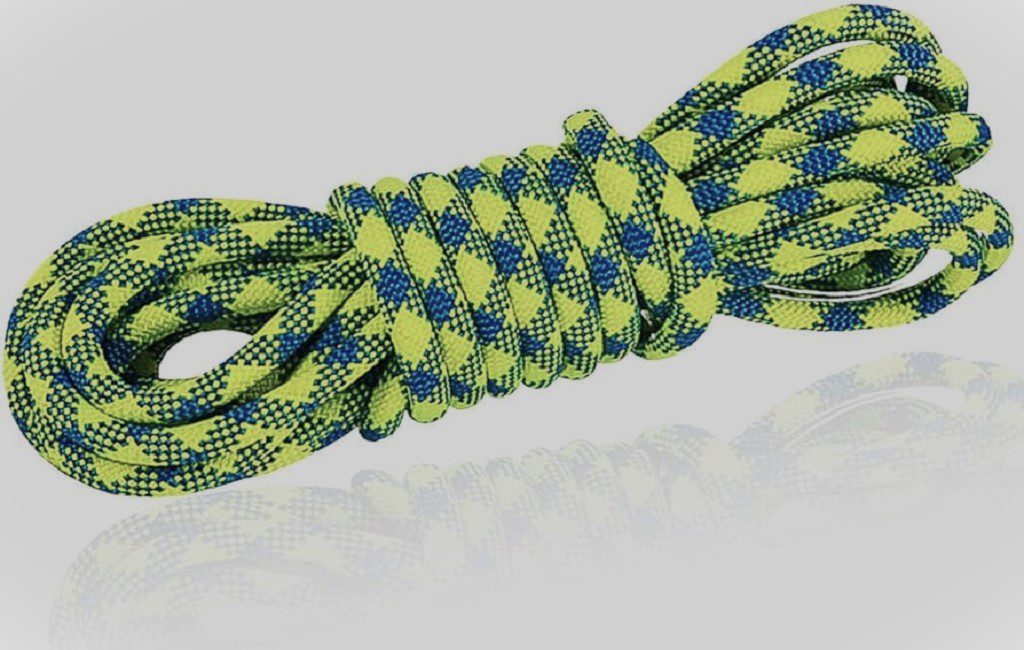
Dynamic Rope: Achieve Unparalleled Resilience with our Power-Packed Collection
Dynamic rope is a type of climbing rope designed to stretch and absorb energy during a fall, providing enhanced safety and protection for climbers. Climbing ropes are an essential piece of equipment for any climber, offering support and protection during ascent and descent.
Contents at a Glance
ToggleAmong the different types of climbing ropes available, dynamic ropes have gained popularity for their unique characteristics. Unlike static ropes that do not stretch, dynamic ropes are designed to stretch and absorb energy when a climber falls. This stretching ability allows dynamic ropes to provide a cushioning effect, reducing the impact on the climber and mitigating the risk of injuries.
The elasticity also helps in minimizing the strain on the anchor points of the rope system. We will explore the features, benefits, and considerations associated with dynamic ropes. Whether you are a beginner or an experienced climber, understanding the importance of using the right rope can make a significant difference in your climbing experience and safety. So, let’s delve into the world of dynamic ropes and discover why they are an indispensable part of climbing gear.
Power-packed Collection Essentials
When it comes to climbing, having the right gear is crucial for both safety and performance. One essential item that every climber should have in their arsenal is a dynamic rope. Dynamic ropes are specifically designed to absorb the impact of a fall, making them ideal for climbing and mountaineering activities. In this article, we will explore the power-packed collection essentials of dynamic ropes, focusing on two key aspects: materials and craftsmanship and the resilience factor.
Materials And Craftsmanship
Dynamic ropes are crafted using a combination of high-quality materials that ensure both durability and flexibility. These ropes typically consist of a core and a sheath. The core, usually made of nylon or polyester, provides strength and elasticity, while the sheath, often made of nylon or a combination of nylon and polyester, offers protection and abrasion resistance.
The craftsmanship involved in creating dynamic ropes is meticulous, ensuring that each rope is made to the highest standards. Specialized techniques are employed to weave the core and sheath together, creating a strong bond that can withstand the rigors of climbing. Additionally, the ropes undergo strict quality control measures to ensure that they meet the safety standards set by regulatory bodies.
The Resilience Factor
One of the defining features of dynamic ropes is their ability to absorb the energy generated during a fall. This resilience factor is crucial for protecting climbers from injuries by reducing the impact force on the body and the anchor points. Dynamic ropes are engineered to stretch and elongate when subjected to a sudden load, effectively dissipating the force and minimizing the risk of injury.
Not only do dynamic ropes provide a safety cushion, but they also enhance the climbing experience by allowing for smoother falls and dynamic movements. This elasticity gives climbers the confidence to push their limits and attempt more challenging routes, knowing that they have a reliable safety net in place.
Comparison To Static Ropes
While static ropes are suitable for certain activities like rappelling or hauling gear, they lack the elasticity and shock absorption capabilities of dynamic ropes. Static ropes typically have a low stretch factor, making them unsuitable for absorbing the impact of a fall. In contrast, dynamic ropes excel in this area, making them the clear choice for climbing and other high-impact activities.
It’s important to note that when using dynamic ropes, proper technique and adequate anchoring are essential for safety. However, with the right precautions, these ropes provide climbers with a power-packed essential that enhances both their safety and performance. So, whether you’re a seasoned climber or just starting out, investing in a high-quality dynamic rope is a decision you won’t regret.
Resilience Through Innovation
Dynamic rope is a testament to the resilience and innovation that drives the world of climbing. With its unmatched ability to absorb the impact of falls, dynamic ropes have revolutionized the safety standards of climbers around the globe. In this article, we will explore the science of elasticity behind dynamic ropes, their role in enhancing fall safety, and the importance of maintaining their lifespan to ensure longevity in every climb.
The Science Of Elasticity
At the heart of a dynamic rope lies its exceptional elasticity. This unique characteristic allows the rope to absorb the energy generated during a fall, dissipating it over a larger area and reducing the force exerted on the climber’s body. The science behind the elasticity of dynamic ropes lies in their core construction.
Dynamic ropes are typically comprised of a core and a sheath. The core, made of stretchy materials such as nylon, provides the rope with its elasticity. When a fall occurs, the core stretches, effectively acting as a shock absorber, minimizing the risk of injuries. The sheath, on the other hand, is responsible for safeguarding the core and maintaining the durability of the rope.
Enhancing Fall Safety
The elasticity of dynamic ropes plays a pivotal role in enhancing fall safety for climbers of all levels. By absorbing the impact of a fall, dynamic ropes significantly reduce the likelihood of injuries. This not only promotes climber confidence but also allows them to push their limits, explore challenging routes, and continuously improve their skills.
When compared to static ropes, which lack elasticity, dynamic ropes offer an unparalleled advantage. The ability to stretch and absorb energy not only protects climbers from sudden jerks but also decreases the risk of fractures and sprains that can result from abrupt deceleration. With dynamic ropes, climbers can focus on their technique, knowing that their safety is fortified by the innovative design of their lifeline.
Dynamic Rope Lifespan
Like any climbing gear, the lifespan of a dynamic rope is subject to wear and tear. It is important to regularly inspect and retire a rope when it no longer meets the required safety standards. Manufacturers and climbing associations recommend retiring a dynamic rope after a certain number of falls, as the elasticity and strength of the rope may deteriorate over time.
To ensure the longevity of a dynamic rope, proper care and maintenance are crucial. Here are a few key points to consider:
- Store the rope in a cool, dry place to prevent damage from sunlight, moisture, and extreme temperatures.
- Avoid contact with sharp edges or abrasive surfaces that can cause fraying or cuts.
- Regularly inspect the rope for signs of wear or damage, such as frayed sheath, core exposure, or deformations.
- Clean the rope periodically using mild soap and water, following the manufacturer’s instructions.
- Retire the rope if there are any doubts regarding its integrity, as safety should always be a top priority.
By adhering to these guidelines, climbers can maintain the resilience and safety of their dynamic ropes, ensuring they are ready to conquer new heights with confidence.
Your Adventure Companion
When it comes to climbing, having the right gear can make all the difference between a successful and fulfilling experience or frustration and disappointment. One crucial piece of equipment that stands as your adventure companion is the dynamic rope. With its exceptional strength, flexibility, and durability, the dynamic rope is designed to withstand the unique demands of climbing, making it an essential tool for every climber.
Aligning Rope Choice With Climbing Styles
Choosing the right dynamic rope for your climbing style is of utmost importance. This decision can significantly enhance your climbing performance and safety. Whether you are a sport climber pushing your limits or a trad climber tackling remote multi-pitch routes, understanding the different characteristics of dynamic ropes can help align your rope choice with your climbing needs.
Here are some factors to consider when selecting a dynamic rope:
- Diameter: The diameter of the rope plays a crucial role in its performance. Thinner ropes provide less rope drag and are lighter, making them ideal for challenging climbs. On the other hand, thicker ropes offer increased durability and longevity, perfect for rugged terrains.
- Length: The length of your dynamic rope depends on the type of routes you plan to climb. Longer ropes are beneficial for multi-pitch climbs, providing sufficient rope for rappelling and traversing. Shorter ropes, however, are more convenient for single-pitch sports climbs.
- UIAA Fall Rating: The UIAA fall rating indicates a rope’s ability to absorb falls before breaking. A higher fall rating means the rope can withstand multiple falls without compromising its integrity, making it an excellent choice for daring climbers seeking challenging routes.
Caring For Your Dynamic Rope
Properly caring for your dynamic rope is essential to ensure its longevity and reliability. Regularly inspect your rope for any visible signs of wear, such as frayed or damaged areas. Starting from the first use, store your rope away from direct sunlight and abrasive surfaces to prevent unnecessary degradation.
Here are some tips for caring for your dynamic rope:
- Regular washing: Keep your rope clean by washing it periodically with mild soap and water. Avoid using harsh chemicals or solvents that could damage the fibers. Dry it naturally in a shaded and well-ventilated area.
- Proper coiling: After each use, coil your rope using a figure-eight or butterfly coil to prevent twists and tangles. Proper coiling also helps maintain the rope’s shape and extends its lifespan.
- Storage: Store your dynamic rope in a cool and dry place away from direct sunlight and extreme temperatures. Use a rope bag or tarp for added protection.
- Retirement: Dispose of your dynamic rope if it has been subjected to excessive falls, impact, or shows signs of severe damage. Retire it to ensure your safety and invest in a new one.
Trusting Your Gear In Extreme Conditions
Extreme conditions demand gear that you can trust with your life. When you embark on challenging climbs, your dynamic rope becomes your lifeline, quite literally. Ensuring the reliability of your gear is paramount to mitigate risks and maximize your focus on the climb.
Here are a few factors to consider when trusting your gear in extreme conditions:
- Quality: Invest in high-quality dynamic ropes from reputable brands that meet international safety standards. Inferior ropes may compromise your safety and have a shorter lifespan.
- Inspections: Regularly inspect your dynamic rope for any signs of damage or wear, paying extra attention to areas exposed to excessive friction or stress. If any doubt arises, replace it immediately.
- Proper usage: Follow the manufacturer’s guidelines and instructions for using your dynamic rope. Understand its limitations and never exceed the recommended weight or fall limits. Additionally, avoid using your rope for other purposes like towing or as a harness tether.
- Professional advice: Seek guidance from experienced climbers or professionals to ensure you are using the appropriate rope for your climbing objectives. They can provide valuable insights and recommend the best rope for your specific needs.
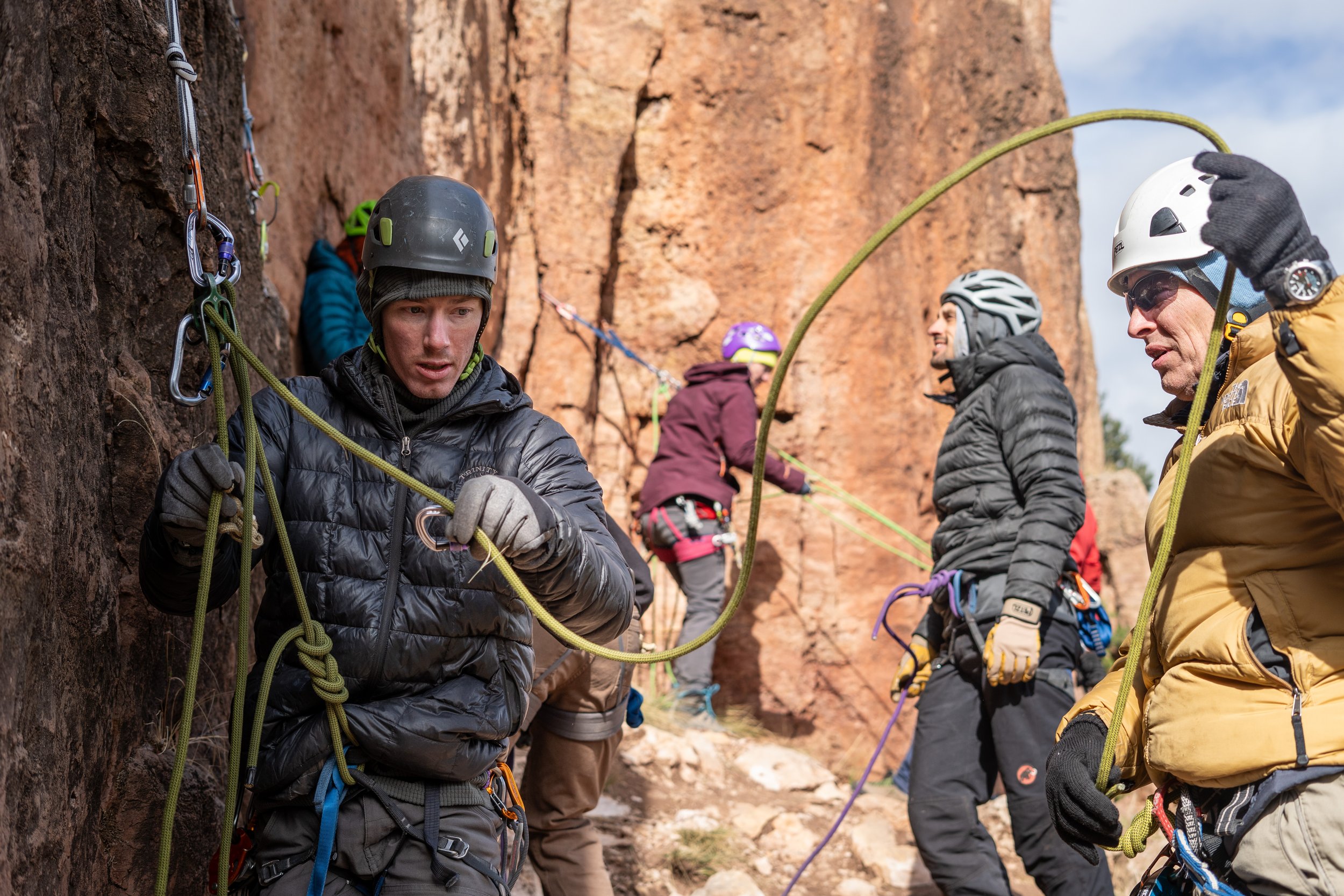
Credit: americanalpineclub.org
Specialized Dynamic Ropes
When it comes to climbing, having the right equipment can mean the difference between a successful ascent and a dangerous fall. One crucial piece of equipment that climbers rely on is the dynamic rope. These ropes are designed to absorb the energy of a fall, reducing the impact on both the climber and the anchor. Specialized dynamic ropes are available for different climbing activities, ensuring that climbers have the right tools for the job.
Indoor Vs. Outdoor Climbing Ropes
Indoor and outdoor climbing require different types of ropes due to the varying factors involved. This type of climbing rope typically has a thinner diameter and is designed for shorter falls. They prioritize ease of handling and durability, as they are frequently used on artificial holds and walls. On the other hand, outdoor climbing ropes are typically thicker and more durable, capable of withstanding harsh outdoor environments, rough rock surfaces, and longer falls. Outdoor ropes are designed with a balance between durability and handling, providing climbers with confidence and safety in their outdoor adventures.
Single, Half, And Twin Ropes
When it comes to climbing ropes, there are three main types: single, half, and twin. Single ropes are the most commonly used type and are characterized by their durability, handling, and versatility. These ropes are designed to be used on their own and are suitable for a wide range of climbing activities.
Half ropes, as the name suggests, are used in pairs. They offer additional safety by allowing climbers to clip into different strands of rope independently. This is particularly useful in situations where there may be a risk of rope damage, such as over sharp edges or in multi-pitch climbing. Half ropes are lighter and thinner than single ropes, making them ideal for longer climbs where weight is a key consideration.
Twin ropes are also used in pairs, but unlike half ropes, they are clipped into both strands simultaneously, providing redundancy and additional safety. Twin ropes are typically thinner than half ropes and are favored in situations where climbers need to tackle long, complex routes with frequent rappelling.
Matching Ropes To Climbing Activities
Choosing the right rope for a specific climbing activity is essential for maximizing safety and performance. Here’s a quick guide to help match ropes to climbing activities:
- Indoor climbing: Opt for a thinner, durable single rope that offers good handling for frequent use in an indoor climbing gym.
- Traditional outdoor climbing: Choose a thicker, more robust single or half rope that can withstand rough rock surfaces and longer falls.
- Sport climbing: Consider a single rope with a balance between handling, durability, and weight to support the dynamic movements involved.
- Alpine climbing: Use twin ropes or a combination of half ropes for added security and the ability to tackle long, complex routes.
- Ice climbing: Select a single or half rope specially designed for the harsh cold and icy conditions, with a durable sheath and excellent handling, ensuring confidence on frozen surfaces.
By understanding the different types of dynamic ropes and matching them to specific climbing activities, climbers can ensure they have the right tools for their adventures, allowing them to climb with confidence and safety.
Rope Handling Mastery
When it comes to climbing, mastering rope handling is crucial for both safety and efficiency. Proper rope handling techniques can greatly enhance your climbing experience, ensuring that your dynamic rope performs optimally and remains in top condition for a longer period of time. In this section, we will explore the importance of knots on rope integrity, belaying techniques for preserving the rope, and safe storage and transport tips to keep your dynamic rope in the best possible shape. Let’s dive in!
Knots And Their Impact On Rope Integrity
Knots are not just a means of securing the rope; they play a crucial role in maintaining the integrity of your dynamic rope. Incorrectly tied knots or improper knotting techniques can significantly weaken the strength of the rope, putting you and your climbing partner at risk. Therefore, it is essential to learn and master the correct knots for different climbing situations to ensure maximum safety and reliability.
Belaying Techniques For Rope Preservation
Belaying is an essential part of climbing and involves managing the rope to protect both the climber and the rope itself. By using proper belaying techniques, you can minimize the wear and tear on your dynamic rope and extend its lifespan. Here are some belaying techniques that focus on rope preservation:
- Keep the rope away from abrasive surfaces: Ensure that the rope does not rub against rough edges or abrasive surfaces that can cause excessive friction and damage. Using a rope protector or pad can help minimize friction in critical areas.
- Avoid sharp bends and twists: Sharp bends and twists in the rope can create weak spots and compromise its strength. Try to maintain smooth and gentle bends, reducing the likelihood of excessive stress concentrations.
- Use appropriate braking techniques: Applying the right amount of friction during belaying is crucial. Too much friction can cause the rope to wear out quickly, while too little can lead to dangerous falls. Practice different braking techniques and find the optimal balance for your climbing style and the specific conditions you encounter.
Safe Storage And Transport Tips
Proper storage and transportation of your dynamic rope can significantly impact its overall performance and durability. By following these tips, you can ensure that your rope remains in optimal condition:
- Keep the rope clean and dry: Moisture and dirt can weaken the fibers of the rope, so be sure to clean it regularly. Avoid storing the rope in damp or wet environments and allow it to dry completely before packing it away.
- Avoid prolonged exposure to sunlight: UV radiation can degrade the strength of the rope over time. When not in use, store the rope in a cool, dry place away from direct sunlight.
- Store the rope coiled or hung: Coiling the rope or hanging it in a rope bag or tarp prevents tangles, kinks, and unnecessary strain on the fibers. Avoid storing the rope tightly wound, as this can cause kinks and reduce its performance.
- Protect the rope during transportation: When transporting the rope, use a dedicated rope bag or backpack to keep it safe from sharp objects and abrasive surfaces. Avoid overloading the bag or placing heavy objects on top of the rope.
By applying these rope handling mastery techniques, you can prolong the lifespan of your dynamic rope, ensuring a safer and more enjoyable climbing experience. Keep practicing, refining your skills, and always prioritize safety in everything you do on the cliffs and mountains. Happy climbing!
Frequently Asked Questions For Dynamic Rope
What Is Dynamic Rope?
Dynamic rope is a type of climbing rope specifically designed to absorb the energy of a fall. It stretches to reduce the impact on the climber and provides a soft catch. It is ideal for sport climbing and lead climbing.
How Is Dynamic Rope Different From Static Rope?
Dynamic rope is designed to stretch to absorb the energy of a fall, while static rope doesn’t stretch and is mainly used for hauling, rappelling, and fixed lines. The stretch in dynamic rope provides a softer catch and reduces the impact on the climber.
What Should Be The Diameter Of A Dynamic Climbing Rope?
The diameter of a dynamic climbing rope depends on the type of climbing you do and your personal preference. Thicker ropes (around 10-11mm) are more durable and suitable for intense climbing, while thinner ropes (around 9-9. 5mm) are lighter and preferred for sport and alpine climbing.
Can Dynamic Ropes Be Used For Top Rope Climbing?
Yes, dynamic ropes can be used for top rope climbing. However, since top rope climbing involves less dynamic forces compared to lead climbing, a thicker and more durable rope is usually preferred to withstand the wear and tear of repeated top rope falls.
Conclusion
Dynamic ropes are a crucial component for climbers due to their stretchability and ability to absorb the impact of a fall. With its durable construction and high-performance features, it offers enhanced safety and reliability. Whether you’re a beginner or an experienced climber, investing in a quality dynamic rope is essential for your climbing adventures.
So, make sure to choose the right dynamic rope that suits your needs and enjoy a safe and exhilarating climbing experience.

